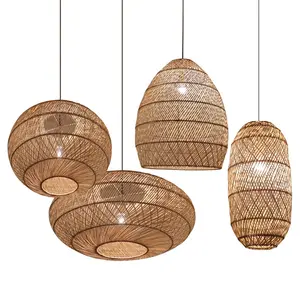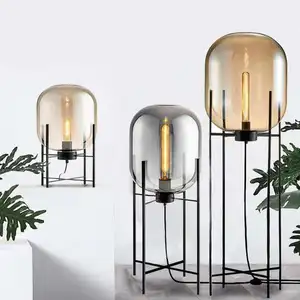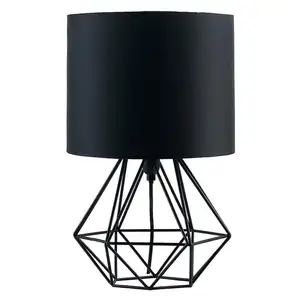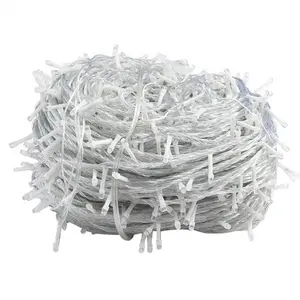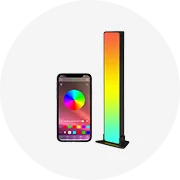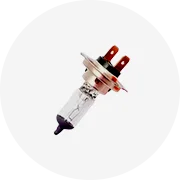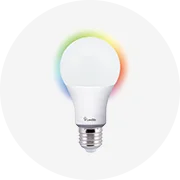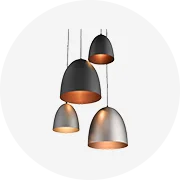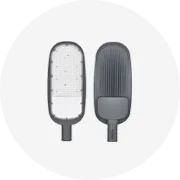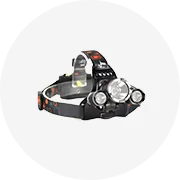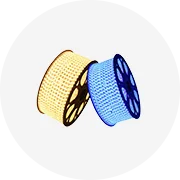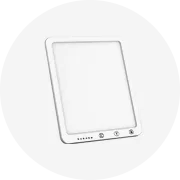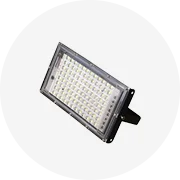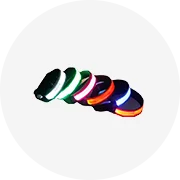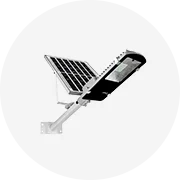Phổ biến trong ngành của bạn






N1615P-TOP RGBW linh hoạt Neon LED Strip không thấm nước 24V RGBW 16x15 mét Neon Flex Strip chiếu sáng cho ngoài trời cầu
32,78 ₪ - 41,69 ₪
Đơn hàng tối thiểu: 250 Mét

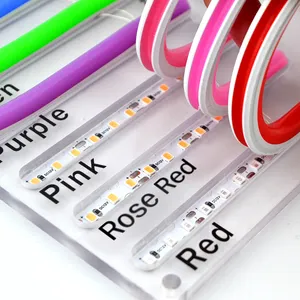





Tira CuộN Para letrero trang trí linh hoạt 12V dấu hiệu Vật liệu Luces luz RGB đèn Ống Silicone Rope Strip Flex Led Neon ánh sáng
3,34 ₪ - 4,13 ₪
Đơn hàng tối thiểu: 50 Mét







N0410d Không Thấm Nước IP67 Tinh Khiết Silicone Hồ Sơ Neon Dải Linh Hoạt Ánh Sáng Mềm LED Dải Ánh Sáng Cho Đồ Nội Thất Tủ Tủ
18,36 ₪ - 22,78 ₪
Đơn hàng tối thiểu: 250 Mét







Đầy Màu sắc RGB LED Neon Flex dây chiếu sáng cho chơi game ban công trang trí ban đêm Neon dải ánh sáng
24,73 ₪ - 25,48 ₪
Đơn hàng tối thiểu: 5 Mét







Dots-miễn phí linh hoạt LED Strip IP20 12V COB Strip RGBW 2700K 3000K 4000K 6000K Trắng LED COB Strip ánh sáng 24V
2,55 ₪ - 3,00 ₪
Đơn hàng tối thiểu: 100 Mét










8 mét chiều rộng Nhôm PCB siêu mỏng LED Strip SMD2835 LED cứng nhắc Strip cho mỏng LED chiếu sáng Hộp
Sẵn sàng vận chuyển
2,81 ₪ - 3,79 ₪
Đơn hàng tối thiểu: 1000 Cái
Vận chuyển mỗi chiếc: 0,5994 ₪






Thanh Đèn LED Làm Mát Tủ Đông Siêu Thị Thanh Đèn LED Chống Nước AC220V 12W 18W 22W IP65 Cho Tủ Lạnh
Sẵn sàng vận chuyển
4,91 ₪ - 5,74 ₪
Đơn hàng tối thiểu: 1000 Cái
Vận chuyển mỗi chiếc: 1,73 ₪










SMD2835 16*16cm 220V 12mm chiều rộng bảng ip32 PVC nhôm tuyến tính dải ánh sáng với dây chuyển đổi cho các bức tường Tủ trang trí
Sẵn sàng vận chuyển
4,13 ₪ - 13,68 ₪
Đơn hàng tối thiểu: 10 Cái
Vận chuyển mỗi chiếc: 30,16 ₪






Đèn Nền TV 12V 5M 10M Ứng Dụng Âm Nhạc Thông Minh Wifi Điều Khiển Từ Xa 150 300 LEDs Dải Đèn LED RGB Linh Hoạt SMD 5050
8,25 ₪ - 25,59 ₪
Đơn hàng tối thiểu: 2 Cái






Thanh Đèn Cứng LED 12V 24V 2835 Thanh Đèn Tủ Đông LED 14W 72 Thanh Đèn Trưng Bày 1M 0.5M
Sẵn sàng vận chuyển
2,81 ₪ - 3,79 ₪
Đơn hàng tối thiểu: 1000 Cái
Vận chuyển mỗi chiếc: 0,5994 ₪






Đèn Chiếu Sáng Trong Nhà 12V Thanh Cứng 2835 Led Dải Trang Sức Tủ Ánh Sáng
Sẵn sàng vận chuyển
2,81 ₪ - 3,79 ₪
Đơn hàng tối thiểu: 1000 Cái
Vận chuyển mỗi chiếc: 0,5994 ₪






Giá bán buôn chiếu sáng thương mại LED Showcase Tủ đông thanh ánh sáng SMD2835 5630 0.5M 1m 1.2m tùy chỉnh thanh ánh sáng
Sẵn sàng vận chuyển
4,91 ₪ - 5,77 ₪
Đơn hàng tối thiểu: 1000 Cái
Vận chuyển mỗi chiếc: 0,5994 ₪






RAYCH Đèn Hậu Xe Hơi Cảnh Báo Bằng Sợi Carbon Led 130Cm 12V Dải Đèn Phanh Đa Năng K Ia Ho Nda To Yota Nis San
22,48 ₪ - 30,72 ₪
Đơn hàng tối thiểu: 100 Cái






Phụ Kiện Xe Hơi Nội Thất Trang Trí Bầu Không Khí Ánh Sáng 12V RGB LED Sợi Quang Dải Ứng Dụng Môi Trường Xung Quanh Ánh Sáng Trong Xe
Sẵn sàng vận chuyển
31,47 ₪ - 33,34 ₪
Đơn hàng tối thiểu: 20 Bộ
Vận chuyển mỗi chiếc: 9,29 ₪






Mới Nhất Xe Lưới Tản Nhiệt Mui Xe Ánh Sáng Với Lần Lượt Tín Hiệu DRL LED Năng Động Ban Ngày Chạy Đèn Tự Động Hệ Thống Chiếu Sáng
11,58 ₪ - 32,93 ₪
Đơn hàng tối thiểu: 30 Cái






Đèn Led Trang Trí Nội Thất Ô Tô Ẩn Bằng Acrylic Dây Đèn Neon Mềm Dẻo RGB Dây Đèn Lạnh Đèn LED Xung Quanh
32,97 ₪ - 56,19 ₪
Đơn hàng tối thiểu: 1 Bộ






Giá bán buôn chiếu sáng thương mại LED Showcase Tủ đông thanh ánh sáng SMD2835 5630 0.5M 1m 1.2m tùy chỉnh thanh ánh sáng
Sẵn sàng vận chuyển
4,91 ₪ - 5,77 ₪
Đơn hàng tối thiểu: 1000 Cái
Vận chuyển mỗi chiếc: 0,5994 ₪






Đèn Phanh Thứ Ba Led Vừa Vặn Thông Dụng Cho Nhà Máy Giá Rẻ Bộ Cánh Gió Phía Sau Cho Xe Hơi Phanh Đèn Chạy Bằng Sợi Carbon Finis
18,43 ₪ - 28,10 ₪
Đơn hàng tối thiểu: 100 Cái






Màu kép độ sáng cao Xe Dẫn đèn DRL năng động ban ngày chạy đèn năng động chảy lần lượt tín hiệu
11,58 ₪ - 32,93 ₪
Đơn hàng tối thiểu: 30 Cái






Xe LED Strip Lights Nhiều Màu RGB Nội Thất 16 Triệu Màu 5 Trong 1 Với 236 Inch Sợi Quang, RGB Môi Trường Xung Quanh Ánh Sáng
Sẵn sàng vận chuyển
36,71 ₪ - 41,21 ₪
Đơn hàng tối thiểu: 50 Bộ
Vận chuyển mỗi chiếc: 4,28 ₪






Bán buôn chiếu sáng thương mại SMD LED Showcase Tủ đông thanh ánh sáng tùy chỉnh IP67 nhôm kích thước cơ thể 0.5M 1m 1.2m màu sắc 5630
Sẵn sàng vận chuyển
4,91 ₪ - 5,77 ₪
Đơn hàng tối thiểu: 1000 Cái
Vận chuyển mỗi chiếc: 0,5994 ₪






2.4m 12W xe Led năng động ban ngày chạy Đèn năng động chảy tín hiệu rẽ trắng vàng 12V phổ
11,58 ₪ - 32,93 ₪
Đơn hàng tối thiểu: 30 Cái






Thanh Đèn LED Cho Tủ Đông 6W/8W/10W/12W/14W Thanh Đèn Led Cho Tủ Đông Chống Nước IP65 Để Trưng Bày Đồ Uống Lạnh Thực Phẩm Đông Lạnh
5,36 ₪ - 7,87 ₪
Đơn hàng tối thiểu: 500 Cái






Led xe mui xe ánh sáng với tín hiệu lần lượt Vàng quét bắt đầu DRL năng động ban ngày chạy đèn tự động trang trí ambinet đèn 12V
11,58 ₪ - 32,93 ₪
Đơn hàng tối thiểu: 30 Cái



C20 C15 C14 C13 C5c6 320 Receptacle Csocket C21 C17 Dải Góc Led Ac Với Khóa Iec320 Màu Pdu C19
Sẵn sàng vận chuyển
3,68 ₪ - 5,06 ₪
Đơn hàng tối thiểu: 1000 Cái
Vận chuyển mỗi chiếc: 2,44 ₪






Dây điện dẫn Dải một tháp nữ mở cuối B mở rộng dẫn 13A anh đa bs1363 3-prong Anh Loại cắm
Sẵn sàng vận chuyển
2,96 ₪ - 4,50 ₪
Đơn hàng tối thiểu: 500 Cái
Vận chuyển mỗi chiếc: 2,63 ₪






Trang trí hiện đại thông minh góc ánh sáng điều khiển từ xa tuya hỗ trợ Google Alexa RGB LED góc Đèn sàn cho phòng khách
65,74 ₪ - 68,36 ₪
Đơn hàng tối thiểu: 1000 Cái






Bán Hot Led bướm đèn cho Wedding & Party trang trí tổ chức sự kiện ánh sáng bướm

106,12 ₪ - 330,86 ₪
Đơn hàng tối thiểu: 2 Bộ





Nhà Máy Bán Buôn Nhà Thông Minh Chuyển Động Kích Hoạt Tường Stairway Ánh Sáng Kỹ Thuật Số LED Cầu Thang Ánh Sáng Led Cầu Thang Dải Ánh Sáng
Sẵn sàng vận chuyển
745,39 ₪
Đơn hàng tối thiểu: 2 Bộ
Vận chuyển mỗi chiếc: 412,02 ₪






Đèn Thanh Chữ Nghệ Thuật Thiết Kế Tối Giản Hiện Đại Đèn Chùm LED Đèn Chùm Phòng Ăn
221,00 ₪ - 370,82 ₪
Đơn hàng tối thiểu: 1 Cái






1pcs 1.4m 1.5 m tinh khiết Cáp Tước kết thúc với EU cắm dây điện màu đen 220V Pigtail điện tử dây Euro điện dây cáp
Sẵn sàng vận chuyển
5,17 ₪ - 5,29 ₪
Đơn hàng tối thiểu: 50 Cái
Vận chuyển mỗi chiếc: 8,47 ₪






Xriver Hot 1.4m 280Lm tam giác bầu không khí nhà thông minh âm thanh kích hoạt Led RGB đứng tầng góc ánh sáng
Sẵn sàng vận chuyển
63,27 ₪ - 65,25 ₪
Đơn hàng tối thiểu: 2 Cái
Vận chuyển mỗi chiếc: 63,23 ₪






Ý sang trọng phòng ngủ tủ quần áo với LED Strip ánh sáng sợi nhỏ da lý tưởng cho các khách sạn và biệt thự
5.783,26 ₪ - 7.232,81 ₪
Đơn hàng tối thiểu: 2 Cái



C20 C15 C14 C13 C5 C6 320 Receptacle Csocket C21 C17 Dải Góc Led Ac Với Khóa Iec320 Màu Pdu C19
Sẵn sàng vận chuyển
3,68 ₪ - 5,06 ₪
Đơn hàng tối thiểu: 1000 Cái
Vận chuyển mỗi chiếc: 2,44 ₪






Dây kết thúc IEC Nồi cơm điện Anh cắm nam và nữ mở stripepd cho hơi nước sắt mở rộng dây điện dải
Sẵn sàng vận chuyển
2,96 ₪ - 4,50 ₪
Đơn hàng tối thiểu: 500 Cái
Vận chuyển mỗi chiếc: 2,63 ₪






Trong nhà trang trí nội thất thông minh góc tầng thường vụ tiêu chuẩn đèn chiếu sáng hiện đại đứng tầng ánh sáng LED RGB đèn sàn cho phòng khách
65,74 ₪ - 72,11 ₪
Đơn hàng tối thiểu: 1000 Cái






Chăn cuối 330V Reel mở dây cắm cáp điện 1.5 cho UK dây điện LED Strip
Sẵn sàng vận chuyển
2,96 ₪ - 4,50 ₪
Đơn hàng tối thiểu: 500 Cái
Vận chuyển mỗi chiếc: 2,63 ₪






Đôi mở rộng dải 3 prong 5ft 3x18 AWG mở hệ thống dây điện Anh cắm 13 amp dây điện cho Chăn điện
Sẵn sàng vận chuyển
2,96 ₪ - 4,50 ₪
Đơn hàng tối thiểu: 500 Cái
Vận chuyển mỗi chiếc: 2,63 ₪
Các danh mục hàng đầu
Giới thiệu về dải led 1.4m
Alibaba.com cung cấp các sản phẩm 61 dải led 1.4m. Có rất nhiều dải led 1.4m lựa chọn dành cho bạn, chẳng hạn như ứng dụng điều khiển, điều khiển cảm ứng, và điều khiển bằng giọng nói. Bạn cũng có thể chọn từ có, không có dải led 1.4m. Cũng như từ pvc, nhựa, và thép không gỉ dải led 1.4m.Và bất kể dải led 1.4m là khách sạn, cảnh quan, hay kho.
